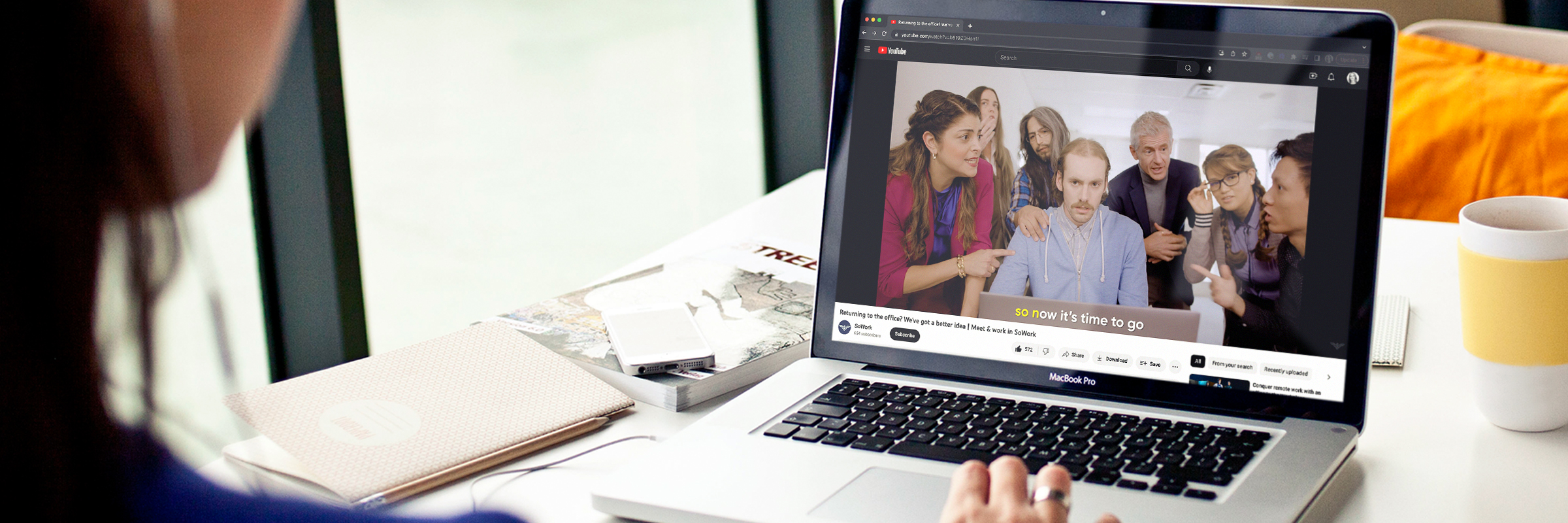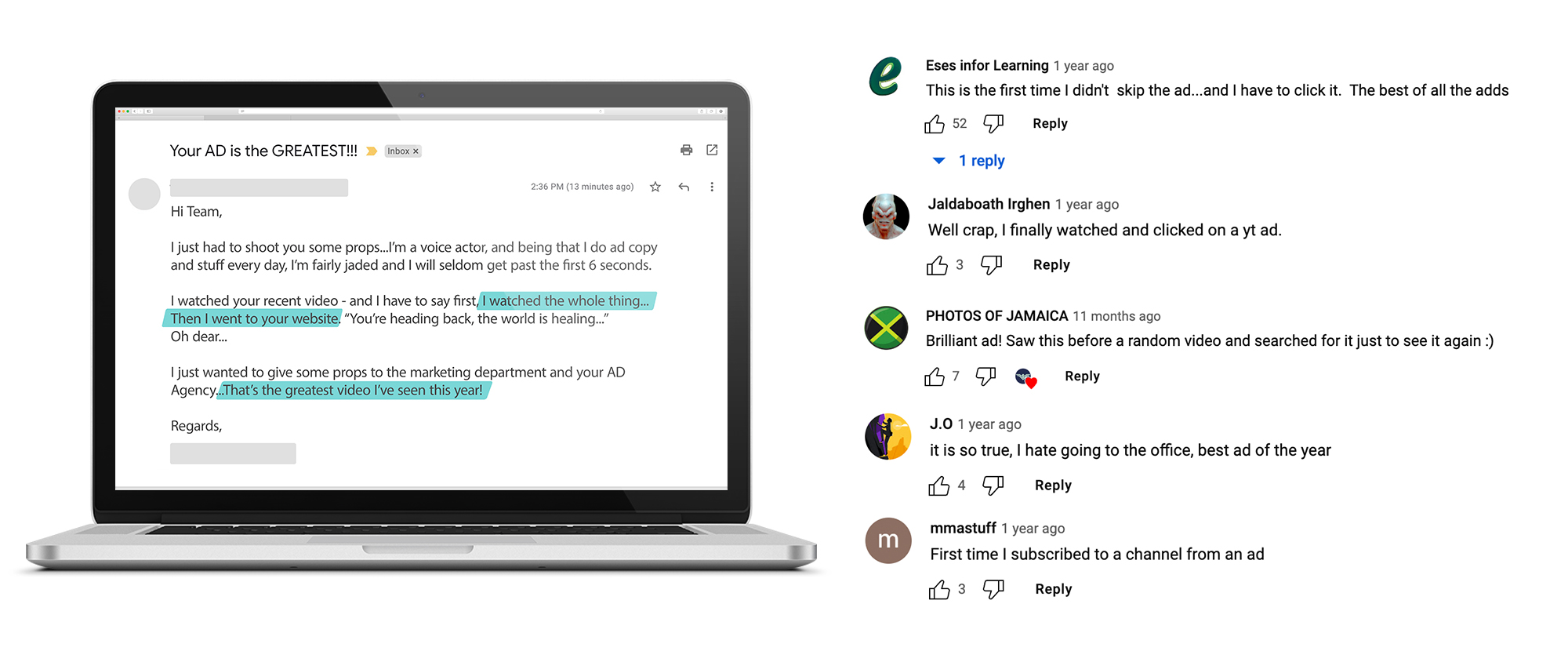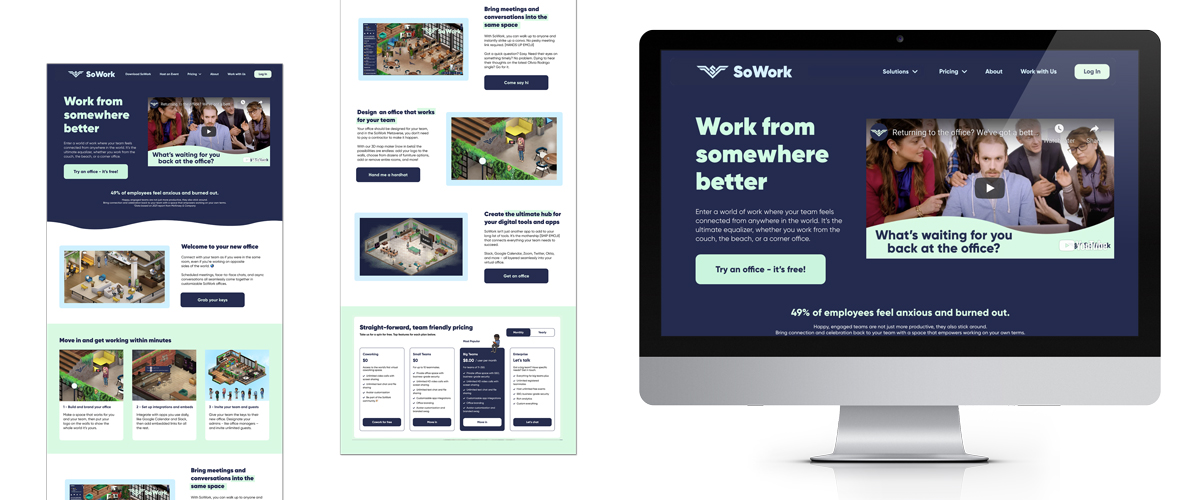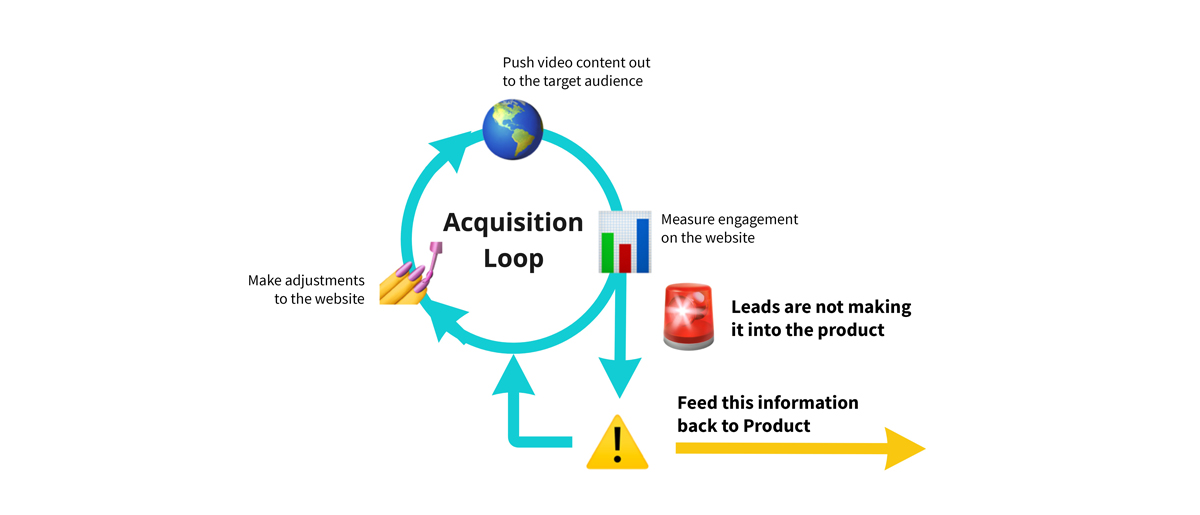 previous
next
previous
next 
Channel & Message Fit

Testing the viability of channel and message
Company: SoWork, B2B SaaS
Stage: Early stage, pre product-market fit
Responsibilities: Managing creative asset development, implementing paid ad campaigns, creating metrics dashboards, landing page design and creation, collaborating with Product, Data, and Marketing teams
Background
SoWork recently partnered with a PR firm to announce the launch of a new product. Given that their platform is extremely visual, I wanted to see if we would have greater success using video campaigns on YouTube for future product/feature launches.
We were pretty confident that our ideal customer was facing a number of painful problems around returning to a physical office. With that in mind, we created content to speak to those pains in a way our target customers would respond to.
The creative
Partnering with a video production company, Riptide, and professional recording artist, Adrian Chalifour, we created a video aimed at the top of the aquisition funnel. Employees were actively resisting a return to physical offices, giving high visibility to our market. So we aimed to capitalize on this unique opportunity by investing in a video that was more polished and could remain relevant over time.
Watch the video here.
Distribution strategy
I added the video to YouTube, establishing a channel for the brand. Since SoWork didn't yet have a significant following on the platform, I used the video in an ad campaign with a modest budget to ensure a statistically significant audience size. I then targeted the highest level definition of our ideal customer: employees and managers that are confident returning to the office is not the right decision for their tream.

After just a few days, the comments and responses to the video were overwhelmingly positive. We received dozens of comments and even a handful of cold outreach messages to share positive reactions to the video. We took this as a strong signal that the content was speaking to the audience we were targeting AND that the audience had a presence on the channel. But even though these two statements were true, we still needed to prove that our audience would actually convert into customers.

To determine if video viewers would convert into actual customers, I created a unique landing page for incoming traffic. The page contained messaging around benefits we were currently testing as the Product team developed our platform toward product-market fit.
Measuring performance
In order to track the success of this page, I created a full funnel dashboard using Google Analytics and Data Studio. I tracked the journey of video viewers through to actions taken on our website. Working with our Engineering and Data teams, I was able to further extend the funnel to include activation numbers, giving us full visbility to measure our efforts.
I ran a series of A/B tests on the landing page, swapping out messaging to see what resonated most strongly with the traffic coming in from the ad campaign. We were able to reach a 10%+ conversion rate of site traffic into the free trial we had available, which surpassed our initial goals for this project.

Before hitting our peak conversion metrics, we discovered that we had a gap in our aquisition funnel for mobile users. Thanks to the metrics dashboard I had set up, we were able to see that users were attempting to enter the platform but were never actually getting through the login process. After looking at data, I was able to determine that this gap wasn't due to the login process itself, but was a hole in the customer journey for mobile users.
I was able to feed this learning back to the Product team, and in the meantime, I altered our targeting to exclude mobile users until we could address the issue in the product.
Testing scalability
Given the initial positive results, my next step was to test whether or not our results would scale. I increased the budget to see if it would hold at higher volume as well as over an extended period of time. When the numbers remained constant, I felt confident declaring that the results would likely scale up.
Evaluating the test
At the end of our test, we were able to get a significantly lower CAC for users who came from our video versus those through PR. Even after the original cost of video production was factored into the equation, we still ended up with a much lower CAC. Given these results, we felt comfortable favoring YouTube as an aquisition channel for future go-to-market efforts.